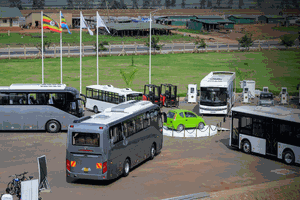Does changing tyre size affect gears?

Narrower tyres reduce the car stability and road holding during high speed manouvering. COURTESY PHOTO
What you need to know:
- Fitting larger tyres to your car will reduce the final drive ratio and torque from gearing to the wheels. Larger tyres increase rolling radius, which decreases engine revolutions per minute.
Hello Paul, you have mentioned before that fitting bigger tyres affects a car’s gears. However, if the gearing ratios stay the same, what do tyres have to do with it? MJ
Hello MJ, it is true that fitting bigger tyres affects the gearing of a car or gear ratios because bigger tyres alter the rolling radius or distance from the centre of the wheel to the road surface. In other words, the rolling radius is a measure of the distance travelled as a function of wheel revolution. This means that when you fit bigger tyres onto your car, you will cover longer distances with each tyre rotation.
To understand how altering tyre sizes affects gearing and its implications for a motorist, it is useful to appreciate the concepts 'gear' and 'gear ratios' because they explain how gears work and help us understand the relationship with tyre sizes. Gears are rotary cogs with teeth that are assembled in different sizes and designs and used to change the speed of moving vehicles. Gear ratios indicate how many times a gear has to turn for another gear to turn once. This enables a car to reach greater speeds or climb higher hills.
Fitting larger tyres to your car will reduce the final drive ratio and torque from gearing to the wheels. Larger tyres increase rolling radius, which decreases engine revolutions per minute.
This also reduces the engine speed and torque transmitted to the wheels. As a result, the car will experience reduced acceleration and towing capacity. Altering the size of tyres will also reduce fuel economy. Larger tyres have more rolling resistance and weigh more.
Both factors reduce fuel economy as the engine works harder and demands more energy or fuel to drive the car forward. It is no wonder that car manufacturers set recommended tyre sizes for a car because they have tested them and designed transmissions with suitable gear ratios to get the best performance, fuel economy and handling on each particular car.
Therefore, altering tyre sizes may require altering gear ratios or gearbox designs to maintain the car manufacturer's specifications for optimum handling, performance and fuel economy.




